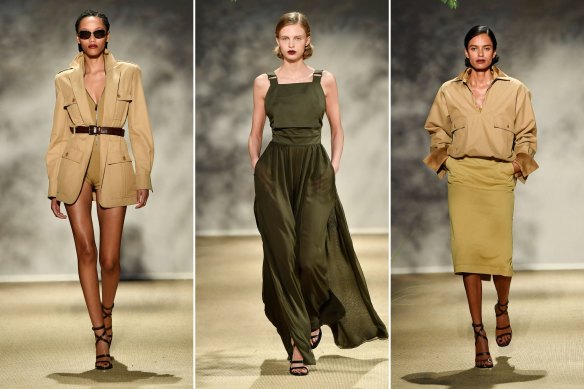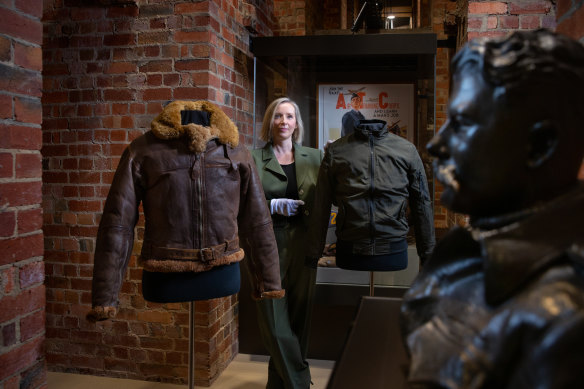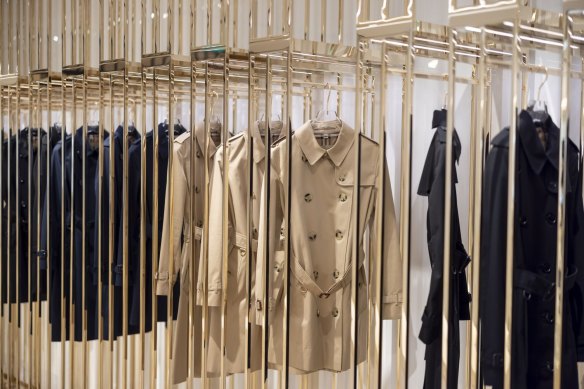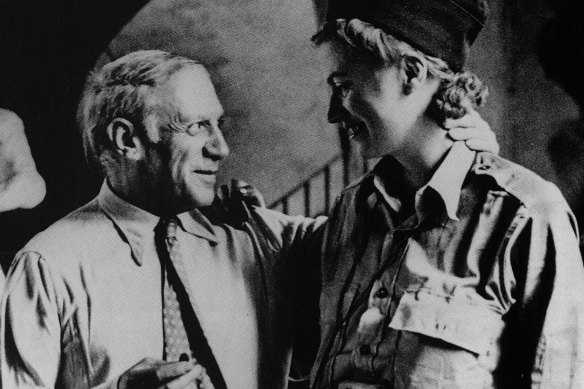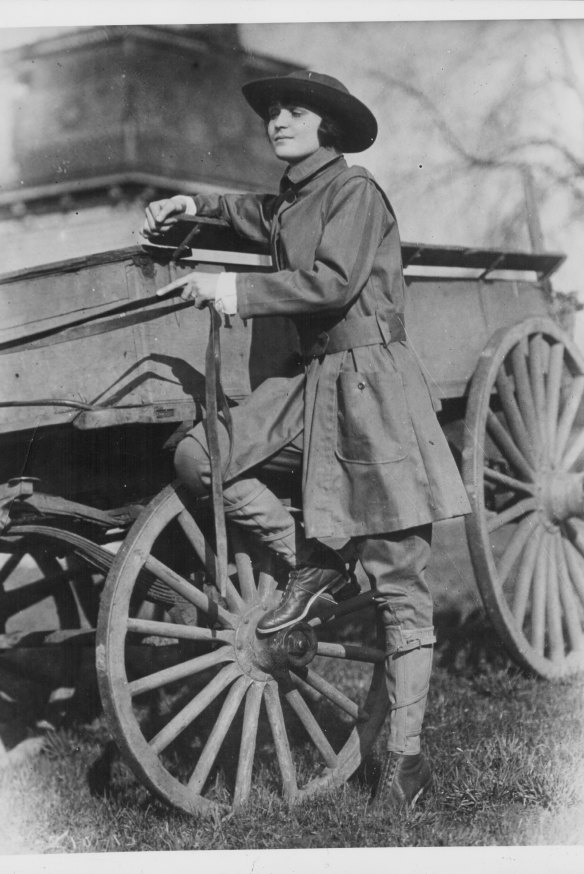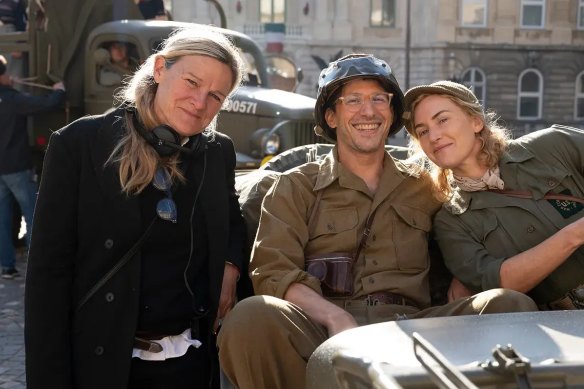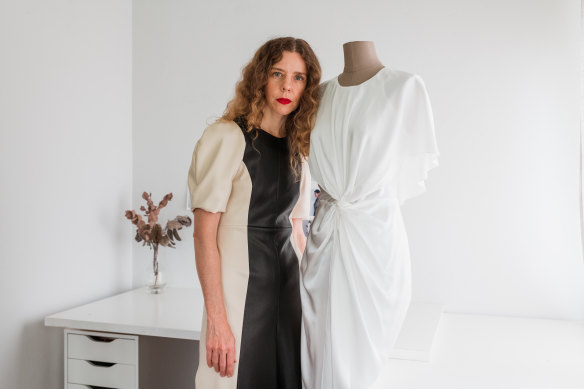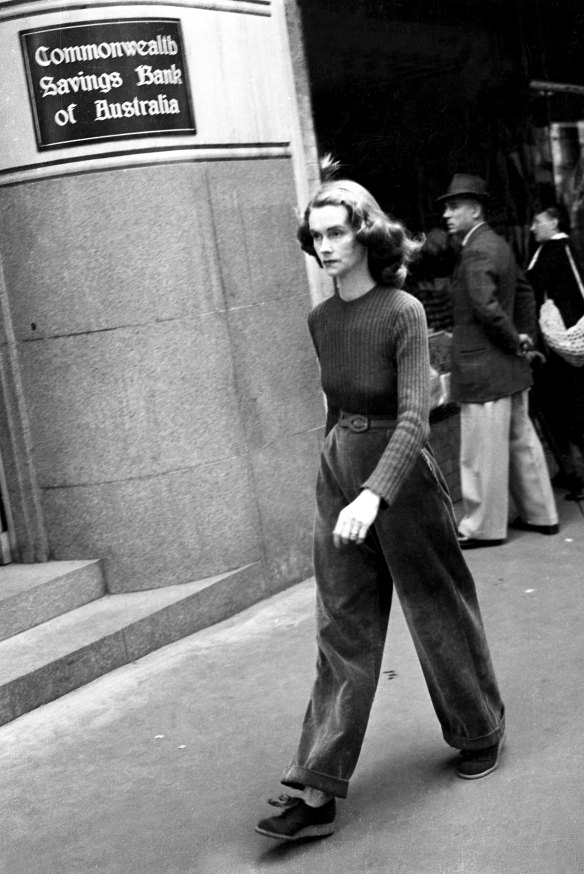From warfront to wardrobe: the details that once meant life or death
By Melissa Singer
Military influences aplenty in Max Mara’s ready-to-wear collection for autumn-winter 2024.Credit: Getty
Save articles for later
Add articles to your saved list and come back to them any time.
Did you know that white T-shirts were originally issued by the American Navy, and that the Spanish-American war gave the world chinos?” designer Bianca Spender asks, breathlessly, down the phone line.
The opportunity to discuss the military influences in contemporary clothing, which are, seemingly, omnipotent, has given the history-loving Spender a reason to go down rabbit holes, and ground some of fashion’s frippery in a much darker past.
Then and now … curator Kate Spinks-Colas with a 1940s-era bomber jacket (left), and one from today’s fashion.Credit: Simon Schluter
“We pick up on these things in little ways, but you have to re-read them to [put] more links together,” says Spender, acknowledging the work of the late American fashion historian Anne Hollander.
Sometimes, those links are more obvious. Indeed, the chino came from the Spanish “pantalones chinos”, which American soldiers stationed in the Philippines at the turn of the 19th century called the pants, which were made in China, hence the name. And, aside from trends in colours and fabrication, the chino has remained largely unchanged for more than a century.
The iconic Burberry trench coat was originally designed in 1912 to clothe British Army officers.Credit: Bloomberg
Not so the trench coat, which was first introduced by Burberry in 1912 to clothe British Army officers and has been one of military fashion’s most reimagined garments – from haute couture to the high street. These days, there are trench coats that are unbelted, made from organza or bright orange: hardly the stuff of utility and protection the originators had in mind.
Still, it’s garments such as the trench, in its many guises, that keep military style in fashion. Indeed, on the cycle of trends, military is never firmly “out” – it merely waxes and wanes. At times, such as the months immediately following Donald Trump’s election to the White House, fashion lurched towards military trends, when clothes were quite literally seen as armour against a changing, uncertain world.
This season, military is also having a moment, albeit in a softer, less literal, way. Take Max Mara’s collection at last month’s ready-to-wear shows in Milan, where the influence of wartime photographer-correspondent (and muse of Pablo Picasso) Lee Miller helped inspire Ian Griffiths’ collection of pencil skirts and trench coats. (Miller, who died in 1977, is also having a moment, with Kate Winslet playing her in a biopic, Lee, releasing later this year; an exhibition of her work opens at Heide Museum of Modern Art next month.)
Lee Miller with Pablo Picasso during the liberation of Paris, 1944.Credit: © Lee Miller Archives England 2023
While Griffiths leaned into the military origins of these garments – the World War I British Women’s Land Army was also high on his mood board – the designer did so “with pacifist overtones”, expressed through a colour palette that was more floral than frontline.
The Women’s Land Army inspired Max Mara’s latest collection.Credit: Getty
Tension and transformation
The inherent tension between the conflict-driven – even violent – overtones of military uniforms, and their influence on fashion, is explored in a new exhibition, Trenches to Runway: Military Influences on Popular Fashion, opening this week at Victoria’s Shrine of Remembrance.
Curator Kate Spinks-Colas hopes the original pieces, which include a military dress coat from the 1800s, and an original Burberry trench, will inspire people to consider the “little details” in our clothes that owe a debt to wartime clothing, which prioritised functionality over form.
Kate Winslet (right), as Lee Miller, on the set of Lee with director Ellen Kraus and co-star Adam Samberg.
“The bomber jacket was originally designed with buttons, which was completely impractical for pilots to get dressed quickly,” she says, adding that the next iteration had a zip. “These seemingly unimportant details can actually be [the difference between] life and death. It sounds dramatic but it’s true.”
Most of fashion’s mood-boarding of military style leads to a quite benign endpoint, at least politically if not aesthetically. Spender’s rendering of a classic trench coat in a sheer georgette (“You can appreciate the construction and detail … in such a different way”) almost subverts its original function as a protective garment. Still, she is always mindful of the context in which the original garment was created.
Respect for the history … designer Bianca Spender.Credit: James Brickwood
“I ask myself, what does it feel like for people who have been to war to see pieces now thrown into the everyday and almost in a decorative fashion – the frippery or the frivolity?” she says. “If there is enough respect of the original form then hopefully it’s a positive transformation of the objects, and they can have a new life.”
Sometimes, the line between inspiration, insult and even incitement can be wafer thin. Kate Sylvester’s 2008 show at Australian Fashion Week angered veterans’ groups after the New Zealand designer sent models down the catwalk wearing replica war medals (Sylvester promptly apologised, saying she had the “deepest amount of respect” for returned servicemen and women).
Romanticism meets utility
It can be a “sticky” thing when symbols, namely garments, that have such strong roots in “violence, oppression and colonialism” are portrayed through the glamorous lens of high fashion, says Dr Harriette Richards, a lecturer in the School of Fashion at RMIT.
That’s not to say designers or consumers of fashion should necessarily boycott aviator sunglasses, cargo pants or combat boots. Often, it’s more about the context in which pieces are worn, and the dilution of the garment’s original intent over time.
A woman wearing pants on the streets of Sydney’s CBD in March 1949.Credit: Sun News
“Contemporary fatigues are very different to the ones that inspire fashion,” says Richards. “It’s as if we have the benefit of distance and time – the fashion on the street is much more inspired by older, past [military] garments.”
For Spender, the 1940s, more than any other decade steeped in military history, provides a design anchor for her entire label, a wartime period where menswear began its creep across the gender aisle (pants! boilersuits!). “I’m uncomfortable with things being very girly – I always need to have an offset,” she says. “If there’s a puffy sleeve, there has to be a ‘toughening’ – the romanticism meets utility.”
Spender’s reference archive includes an original airforce jacket, trench and cargo pants, items that have featured in so many theatres of war through centuries – the very definition of slow fashion. “They were always perfecting this one piece of clothing, so the consideration that’s gone into this one piece is decades of refinement,” she says.
Trenches to Runway: Military Influences on Popular Fashion is at the Shrine of Remembrance, Melbourne, from October 23. Lee Miller is at Heide Museum of Modern Art from November 4.
The Booklist is a weekly newsletter for book lovers from books editor Jason Steger. Get it delivered every Friday.
Most Viewed in Lifestyle
Source: Read Full Article
